



Featured image: Gambiologia presenting one of their projects made specially for the festival. Image: aloysio araripe.
Festival Cultura Digital took place in Rio de Janeiro between the 2nd and the 4th of December 2011. It was the third edition of the event known as Forum da Cultura Digital that happened in Sao Paulo in the first two years. It gathered 6 thousand people in about 20 open discussions, 20 workshops and 52 international and national projects presented in MAM Rio de Janeiro (the Museum of Modern Art) and Cine Odeon.
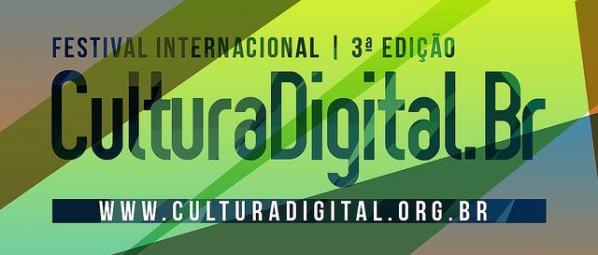
The Festival Cultura Digital is a project from Casa de Cultura Digital, “a criative cluster from São Paulo” composed by 15 institutions. For this project, Casa de Cultura Digital received an honourable mention in the Digital Communities category by Ars Electronica 2010.
One of the particularities of this event is that it brings together political institutions, artists, companies, activists and intellectuals in a hybrid format. The main goal is to change and broaden the limits of digital practices and connect to other people and networks from other cities, states and countries.
This edition of the festival had as key speakers Yochai Benkler (Harvard Professor and co-director of Berkman Center for Internet and Society), Kenneth Goldsmith (poetry professor of Pennsylvania University and founder of Ubuweb), Hugues Sweeney (producer of Interactive movies of National Film Board of Canada), Michel Bauwens (founder of P2P Alternatives), Philippe Aigrain (Sopinspace, CEO), Paulo Coelho (the famous Brazilian writer that made all his books available for download) and Heloisa Buarque de Hollanda (researcher on the relations of “marginal culture” and digital culture).
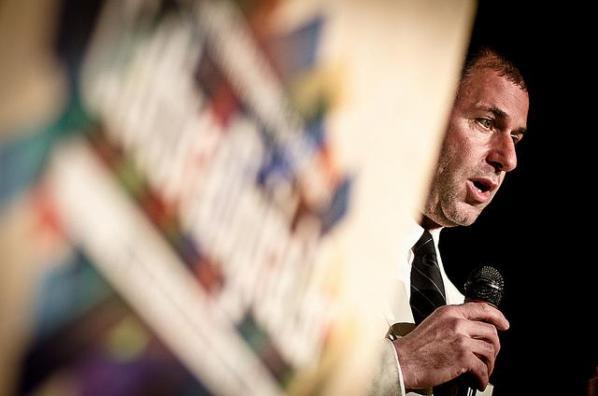
For the first time projects were chosen through an international open call and selected by a group of people involved with the festival. They’ve received almost 400 projects and selected about 80 that were organised in different themes: Construção de laboratórios de cultura digital (constructing digital culture labs), Encontros de rede (network meetings), Mostra de experiências (experience show) and Visualidades (visuals, that gather artistic projects to be shown and discussed).
Casa de Cultura, as defined by them, connects the counterculture from the 60s-70s to the cyberculture from the 21st century. The group itself has members as Claudio Prado, a key figure from the Tropicalia movement. He’s a cultural producer, co-founder of Glastonbury Festival and has produced many concerts of Mutantes and Novos Baianos. He currently coordinates the Laboratório Brasileiro de Cultura Digital. Gilberto Gil, the musician and ex minister of culture of Brazil is the “ambassador of Festival Cultura Digital”. Besides that, many members of Casa de Cultura are journalists, videomakers and programmers in their 30s or under that are directly involved with hackerspaces, independent journalism and public policies for digital culture.

It brings together as partners members of the international mass media as The Wall Street Journal and Reuters, Folha de Sao Paulo (one of the main newspapers in Brazil) as well as the blog Falha de Sao Paulo, that was sued by Folha de Sao Paulo for being critical about its content. Casa de Cultura Digital also represents the Brazilian node of Wikileaks.
Besides international selected projects like Waste2No, Pretty Resistant, Protei / Oil Compass, Bitcoin, Generadores de electricidad con basura electrónica, or The Cartographer; and nacional groups like Cotidiano Sensitivo, Garoa Hacker Clube, Gambiologia, Pandeiro Montagem, or Espaço Macambira, there were projects such as:
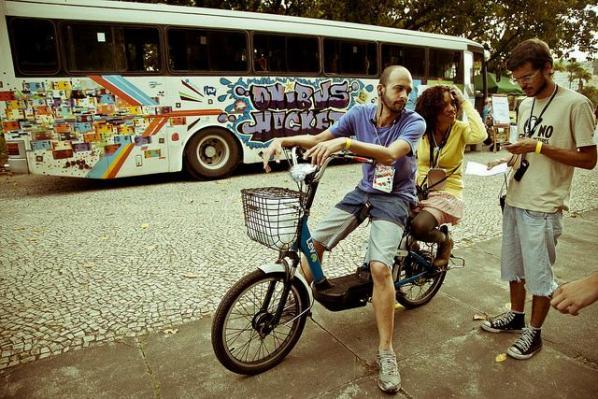
Onibus Hacker was a idea to buy a bus through donation to be modified to include webcam, 3G connection and GPS for Transparencia Hacker [1] projects. The projects are done during the trips to small cities among the group that travels in the bus and also virtually. Some of the projects include workshops, Hackdays and Install Fest to small towns (less than 5,000 inhabitants), also allowing local people to organize themselves (according to Brazilian legislature, anyone can propose a law if it’s signed by 5% of the local electors) that would benefit these contexts. The bus was bought and went to Rio de Janeiro to be shown and visited during the festival.
Brasuíno BS1 is a single board microcontroller inspired on Arduino that uses the AVR microcontroller. This Brazillian version was redesigned using Libre Software, free to reuse and derive, and it’s licensed as GPLv2+ (the original Arduino still uses a microchip that is not open hardware). It’s also compatible with Arduino Uno and Arduino software.
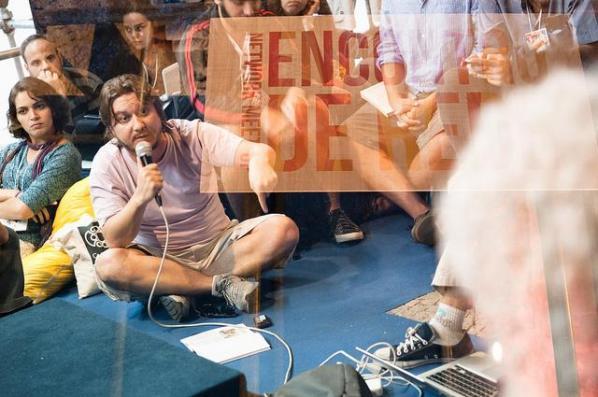
The project is composed by an IT lab based in the Kaiowá community Nhandejara that integrates the indigenous community to straighter demands and opens the discussion about their issues and projects outside the reserve through a web portal. Furthermore it offers workshops for inhabitants and people involved with the group and it’s a source of information for researchers. The project includes organization, digitalization, production and analysis of historical and cultural elements from the Kaiowá and Guarani tribes. The website is bilingual (Guarani-Portuguese).
Cultivo is the first crowdfunding network for Cultural Incentive Laws in Brazil. The main goal is to connect companies and projects approved so that they can contribute to their development. The project was launched during the festival. One of the ideas is to enhance the participation of the private sector in cultural projects. If a project is selected, the companies can use part of the tax money to support it. Nevertheless, many companies don’t know the projects or how to proceed, so Cultivo would be a portal to present the projects to the private community.
LALOCA is the Laboratory for Locative Media and GPS Films. It’s a centre for the production and research of mobile media at the Federal University of Juiz de Fora in collaboration with the University of California San Diego. The projects focus on locative cinema with interactive scripts based on open source OS and tools, as HiperGps, HiperGeo and walkingtools, whose project The Transborder Immigrant Tool [2] has caused great media frenzy and issues with the government for Ricardo Dominguez, professor, activist and one of the developers of the tool.
It’s a platform for mapping soundscapes in Rio de Janeiro and Niterói (greater Rio de Janeiro) based on the Universidade Federal Fluminense. It’s built in a collaborative way to collect a “Museum of sounds” of neighbourhoods and favelas.
Circuito Fora do Eixo is a network of cultural producers and artists from parts of Brazil outside Rio and Sao Paulo. These two cities are known as the cultural and economical “axis” concentrating the funds, spaces and media interest of the country – thus the name Circuito Fora do Eixo which literally means “circuit outside the axis”. The group began in 2005 as a way to stimulate bands to play and tour across Brazil. With the aid of certain technological developments that allowed direct distribution and the lowering of production costs they have created many small festivals (about 180 until today) and gained great relevance in terms of connection with the government and artists. Now Fora do Eixo has two permanent spaces called Casas Fora do Eixo, it has gained a national presence and has broadened its activities to include an interest in free digital cultural policies for education, audiovisual production, etc. [3]
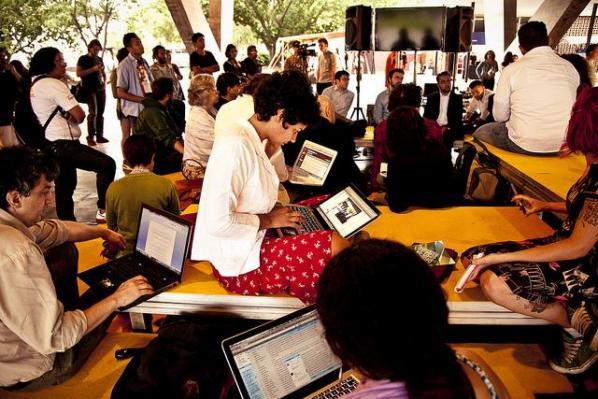
The Festival Cultura Digital is an exciting example of how collectives and individuals create a public and open space for sharing information, not depending but also not ignoring the public and private role in the national scenario. This process is particularly interesting for a country that is learning how to use networked technologies to overcome its gigantic size and its many cultural and socio-economic differences. It’s not an easy task, but it’s a lesson which is worth learning in times where the boundaries between public and private are blurred, when governments are ruled by investors and individuals change drastically the laws of the market as we know it.
Congresso Fora do Eixo – http://congresso.foradoeixo.org.br
Festival Cultura Digital – http://culturadigital.org.br
Casa de Cultura Digital – http://www.casadaculturadigital.com.br
According to the organization, there’ll be videos from the presentation available on the website by the beginning of 2012.
Between July 27th and August 29th, 2010, the eleventh edition of the FILE festival is taking place in Sao Paulo (Brazil), at several locations along the popular Paulista Avenue. After a decade of existence, this veteran festival, which spreads over several cities in Brazil (including Rio de Janeiro and Porto Alegre) as well as other international locations, has introduced for the first time its own award: the FILE PRIX LUX. With a total amount of approximately 120,000 euros, distributed in three categories, the prize is unprecedented in the continent and has received, on this first edition, 1,235 registrations from 44 countries.
Yet this award is not the only remarkable aspect of this year’s festival, which stands out for being particularly accessible to the general public. On the one hand, the exhibitions, performances and workshops as well as the symposium have no entrance fees, and therefore there have been many visitors, most of all young people who line up every day to experience the interactive installations at the FIESP-Ruth Cardoso Cultural Centre. On the other hand, the festival organizers, Ricardo Barreto and Paula Perissinotto, have developed this year a project that takes digital art to the Paulista Avenue by placing several interactive artworks at different locations in the public space. Finally, even the FILE PRIX LUX has been open to the interaction with the public by introducing a popular vote category and an online voting system which was accessible between May and June. This openness sets a good example of how media art festivals can engage the general public to approach this somewhat ignored form of art.
In general terms, the award categories at media art festivals have been subject to change as the creative uses of technology evolved during the last decades. The FILE PRIX LUX has the advantage of being created at a time in which it can be relatively safe to set up a few broad categories that cover most of the forms of combining art and technology. Only three categories have been established: Interactive Art (which usually refers to objects and installations that respond to inputs from the viewer/s), Digital Language (related to the festival’s title and which embraces any artwork that deals with language, narrative, code or text in a generative or interactive manner) and Electronic Sonority (the category assigned to any artwork in which the production or manipulation of sound is a key element). These three categories prove to be comprehensive, as shown by the diversity of the projects distinguished with a prize or an honorary mention: immersive interactive installations, musical performances, urban interventions, bioart pieces, a collectively created machinima movie and even an iPhone app are among this year’s FILE PRIX LUX awardees.
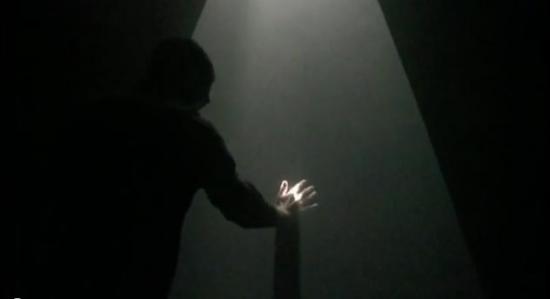
In the Interactive Art category, the winners are Ernesto Klar for Relational Lights (1st prize) and Kurt Henschläger for Zee (2nd prize). Both present immersive environments in which light and space are key elements, although the interaction is totally different. Klar’s work invites the viewer to interact with two projected geometric drawings inspired by the work of Lygia Clark. In a hazy dark room, the viewer sees two T-shaped projections of white light on the ground, which form a three-dimensional space which reacts to the visitor’s presence. The interaction is playful and really beautiful in its simplicity, whilst also limited in time: after a few minutes, the projections suddenly stop reacting to the user’s movements and reconfigure themselves in a new shape. This abrupt interruption is consciously introduced by the artist in order to remind the viewer that the artwork has a life of its own. In contrast, Henschläger’s Zee takes place mostly in the mind of an audience exposed to an overdose of audiovisual stimuli in a foggy room. Continuing the experience of his acclaimed performance FEED, this time the artist allows the viewer to walk around the space and have a more meditative sensory experience.
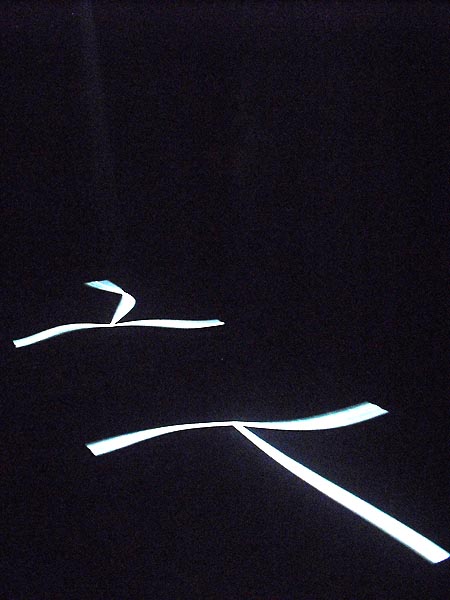
The Electronic Sonority category has brought together several outstanding works, among which Jaime E. Oliver’s Silent Percussion Project and TERMINALBEACH’s Heartchamber Orchestra have been distinguished with the 1st and 2nd prize, respectively. In both projects the human body is incorporated in a novel form in the creation of music, the sound being produced, moreover, not simply by direct inputs but by complex interactions in a constant flow of data. Oliver’s instruments convert the shapes created by the performer’s hands into streams of data that generate, in turn, different sounds. These sounds are not always the same, as could be the case in a traditional instrument, but are changed by the variables established in previous interactions. Thus, Oliver does not simply create a new form of interacting with an instrument but rather a new form of creating music. In a similar way, the [i]Heartchamber Orchestra[/i] project developed by TERMINALBEACH (Erich Berger and Peter Votava) explores a form of creating music based on a feedback loop in which the performers are writing and following the score at the same time. As the artists state, in their project “the music literally comes from the heart”: a network of 12 independent sensors record the heartbeats of the musicians in an orchestra and sends the data to a software that generates a musical score in real time. The musicians play the score as it is displayed on the laptops in front of them, while their heartbeats set the notes in a continuous cycle in which music and performer constantly influence each other.
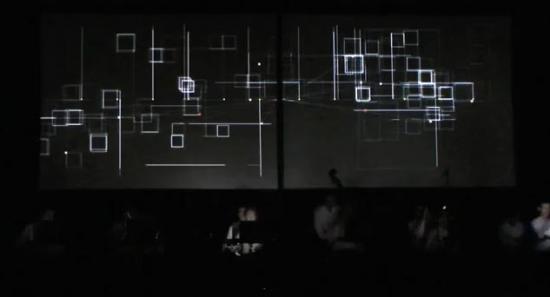
Digital Language is certainly the broadest category of this FILE PRIX LUX, its awardees being quite dissimilar in the formats they use and the objectives of their respective projects. The organizers define this category as including “all research and experiments in the ambit of the multiple disciplines that use digital media”, and the winners exemplify how diverse these disciplines can be. The 1st prize winner, Tardigotchi by the artists collective SWAMP (Douglas Easterly, Matt Kenyon and Tiago Rorke) is a bioart project that sets a critical comparison between artificial and real life. A nicely designed, steam punk-inspired device hosts, on the one hand, a tardigrade, a microorganism measuring half a millimeter in length, along with a robot arm that injects a substance that feeds the creature and a heating lamp that provides warmth. On the other hand, a digital display shows the virtual avatar of this tardigrade, with which the user can interact. Humorously referencing the popular Tamagotchi toy, the artists create a link between the avatar and the real creature: when the user presses the button to feed the avatar, the device inserts real food in the environment of the tardigrade; when an email is sent to the digital creature, a heating lamp gives warmth to the microorganism. Thus, interacting with the virtual pet has consequences in a real living being. This brings our attention into what we can consider alive and how we emotionally attach to artificial creatures while at the same time we undervalue the existence of other living beings. On a different approach, the 2nd prize winner, Hi! A Real Human Interface, by the collective Multitouch Barcelona (Dani Armengol, Roger Pujol, Xavier Vilar and Pol Pla), proposes a more human relationship with technology. A video presents the concept developed by this interaction design group of a different GUI in which a real person is displayed as impersonating the computer. Common interface elements are replaced by handmade physical objects which remind the aesthetics of a video by Michel Gondry. The result is a playful form of interaction in which simple operations such as checking email or upgrading the operating system are shown as actions carried on with real objects by a person inside a box. The proposal is engaging and certainly sets a departure from the old desktop concept, yet it remains unsure to what extend this type of interaction can be applied in a real operating system.
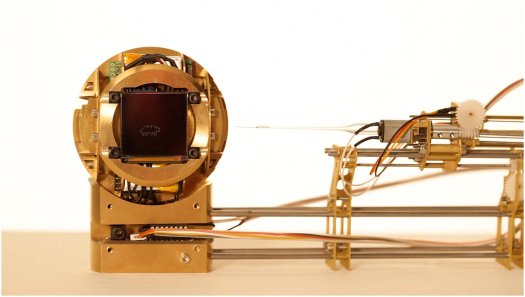
The works that obtained a Vesper statuette (symbol of the FILE PRIX LUX award) along with the also outstanding Honorary Mentions are exhibited at the FIESP-Ruth Cardoso Cultural Centre in a group show that also includes FILE Media Art, a selection of more than 70 works that can be accessed on several computers, as well as a selection of videogames and machinima films. The exhibition is thus richer in content than it would seem at first sight, as the space is divided in numerous sections that conceal several installations which demand (as usual) almost total obscurity. The artworks are well presented, although at times the sound from one installation invades the others, and there are no wall labels that inform the viewer about the concept of the piece or the way to interact with it. The latter, much-discussed issue is quite important, since the info-trainers cannot explain the artworks to every visitor, and quite often this entails that some people may not interact with the pieces or worse, start smashing buttons or interfering projections blindly in the hope of modifying them. Despite this fact, the exhibition has proven to be very successful during the first week of the festival, with a steady flow of visitors who showed a profound interest in the artworks.

A part of the exhibition is devoted to the FILE MACHINIMA section, curated by Fernanda Alburquerque, who selected over 40 works. Among these is the award winner in the Popular Vote category, War of Internet Addiction, by Corndog and the Oil Tiger Machinima Team from China, a 64-minute movie collectively created by players in the MMORPG War of Warcraft. More than mere entertainment, this film has been created as a form of protest against the Chinese authorities’ attempt to control the access and commercial benefits derived from the WoW game, which is extremely popular in the country. The film has had 10 million views since January 2010 and despite being available only in Chinese, it has been the favorite work of those who participated in the online voting system of the FILE PRIX LUX. Besides this feature film, other short films explore the possibilities of building narratives in virtual environments such as Second Life and videogames such as Half Life 2, Eve Online or Shadow of the Colossus.
In addition to the main exhibition, the FIESP Cultural Centre hosts a series of performances and screenings. Under the title Hypersonica, the festival presented a series of digital music performances, among which where the two winners of the FILE PRIX LUX in the Electronic Sonority category. FILE DOCUMENTA, curated by Eric Marke, offers in its 5th edition a selection of “rare and new” documentary films, among which Andreas Johnsen’s Good Copy Bad Copy, an interesting exploration of the conflicts between remix artists and copyright owners, or Robert Baca’s Welcome to Macintosh, which records the first years of the history of Apple Computers.
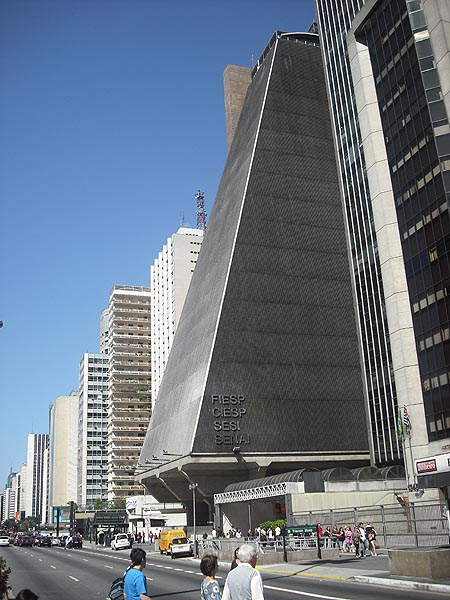
The symposium, hosted by the Instituto Cervantes in Sao Paulo, gathered several experts and artists who presented their explorations in the theory and practice of media art. Among the most interesting contributions were the presentation of Prof. Espen Aarseth on the aesthetics of ludo-narrative software, and the colloquy of South American digital art, in which Raquel Renno (Brazil), Jorge Hernandez, Ricardo Vega (Chile) and Vicky Messi (Argentina) discussed the current developments in the media art scene in the South Cone.
Alongside the FILE PRIX LUX, the most outstanding feature of the present edition of the festival is FILE PAI (Paulista Avenida Interactiva), which takes several interactive artworks to the public spaces in the Paulista Avenue. Interactive art offers the possibility of bringing art to the public space in a more efficient and dynamic form than what is usually known as “public art”. As Ricardo Barreto states: “the public environment is not something empty, aseptic and dead, as is the old white cube; on the contrary, it is an environment teeming with life, with multiple interests and multiple behaviors”. Interactive art integrates itself into this environment and is much more apt to relate to a public that is now willing to take an active role. The organizers of the FILE festival have distributed twelve interactive artworks along the Paulista Avenue, at subway stations, inside shopping malls, and even in a bus. The selected artworks include, among others, videogames such as Patrick Smith’s Windosill or the celebrated games of That Game Company, Flower and Flow; VR/Urban’s SMSlingshot, an urban intervention project that allows users to write a message in a custom-made slingshot that incorporates a screen and a keyboard and then send the message to a wall, where it is displayed as a virtual graffiti; Karolina Sobecka’s Sniff, an interactive projection in which a virtual dog reacts to the presence of passersby; the installations of Rejane Cantoni and Leonardo Crescenti Piso and Infinito ao Cubo, which attracted a large number of people, and the sound piece Omnibusonia Paulista by Vanderlei Lucentini, which is played in a bus as it moves along the avenue, interacting with several points in the itinerary and thus generating a new set of sounds in every trip. These works reveal the possibilities of integrating interactive art in the public space, to the point that, as Ricardo Barreto indicates, “the new paradigm of public art will be the interactive city”. The busy Paulista Avenue is certainly a good location for the creation of an emerging, interactive city.
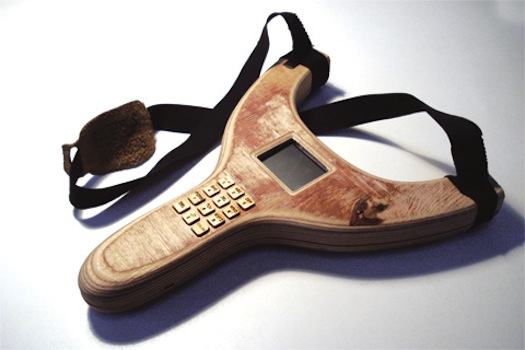
In this 11th edition, the FILE festival has achieved a state of maturity. The FILE PRIX LUX, FILE PAI and an estimated 25,000 visitors to date support its claim of being the largest festival of its kind in Latin America, and a steady event that places Brazil in the map of the international digital art scene. In a tightly interconnected world, each region is a node: there isn’t a center and a periphery anymore, there are no colonies. FILE exemplifies how a region can become a powerful node in this network by promoting the most recent developments in art and technology, avoiding obsolete distinctions between North and South and becoming a point of development for the future stages of our digital culture.
Playing Hard: Urban Art Games of Summer 2010.
Not long ago, urban games were a kind of novelty. Some grew out of the street performance tradition of live theater. Some came from gamers who were involved in tabletop RPG and wanted to experiment with live reenactment. Others were produced by media artists as a way of experimenting with new technologies like GPS and text messaging. But along with these approaches to play, and at times learning from their carefree attitude towards entertainment, there grew another tradition of the urban game, a tradition of using the city focusing on exploration, and as a specific kind of critique. At its worst, the artist produced street game replicates of hollow self-promotion, through corporate, sponsored seasonal festivals. But just as experimental art can involve an analysis of mainstream art, the urban game can embody a palatable critique of the routines of city systems, including the deadening routines of metropolitan life and some of the large scale mechanisms of corporate capitalism.
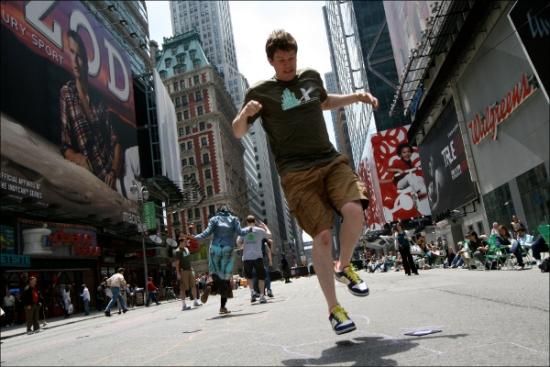
These kinds of games echo the spirit of the Situationist International, which called on artists to create alternate experiences through the construction of situations, psychogeography, and the use of play as a form of critical thinking. Urban games can also remind us of Hakim Bey and his idea of a Temporary Autonomous Zone by using goals, rules, and play with the creation of the ‘magic circle’, a world inside a world, as a method of directing public imagination towards an alternative presence, a way of acting and existing as an independent community within a larger, more repressive reality, even if only momentarily. Urban games also continue the Fluxus idea of the ‘happening’, a participatory media form in which audiences support artists, moving beyond the role of observers of performance to become collaborators in events. With the urban games season about to begin, this review takes a look at how several groups, either consciously or at times not so consciously, have interpreted these traditions for summer 2010.
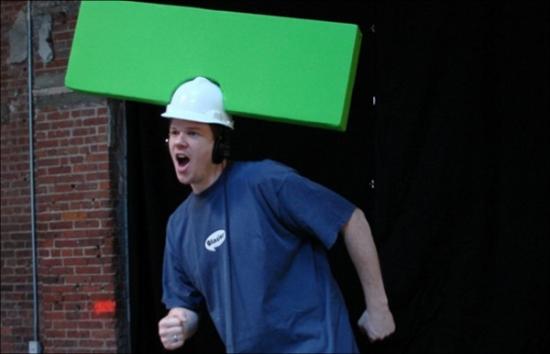
In New York, the much loved Come Out and Play Festival will run from June 4th through June 6th, with events scattered throughout the city borough of Brooklyn. Games include playground mods, GPS exploits, extreme sports, narrative quests, and massively multiplayer scavenger hunts. The festival hosts about forty game designers from around the world and about two thousand people will attend. Executive producer Greg Trefry says COaP strives to be entertaining and is not so much concerned with philosophy as it is with place: “Where the festival is located each year is actually really important to us. We look for interesting parts of the city to experiment on and use as the stage for the festival. So we’ve played everywhere from big anonymous urban areas like Times Square to now more family oriented locales like Park Slope.”
Still, the designers of COaP seem to have a way of engulfing serious issues with comedy and encouraging people reclaim neglected parts of the city by giving them a second look. Along these lines, Atmosphere Industries of Toronto will present Gentrification, a game that picks up on Brooklyn’s ongoing housing conflicts by asking players to assume the roles of real estate developers or neighborhood locals while collecting properties and gentrifying neighborhoods. Meanwhile, Gnarwhal Studios of Baltimore will sponsor ‘Humans vs. Zombies’, a modification of the playground game tag that introduces large groups of strangers to one another by sending players out into the city as the walking dead.. It’s hard to sit in a park, completely shut off from everyone around you, during a two hundred person simulation of a zombie attack. Also part of COaP, New York’s Crux Club will confront community fears of toxic contamination through their game ‘It Lurks in Gowanus’, a hide-and-seek mod that asks participants to track down a creature who has ominously escaped from legendary pollution of the neighborhood’s Gowanus Canal.
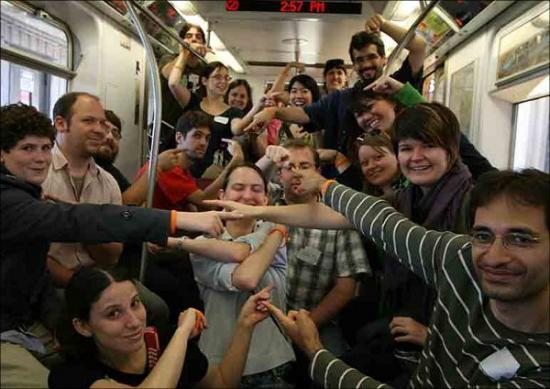
Although he agrees that all urban game events take some kind of cue from historical antecedents like the Situationist International or Fluxus, producer Trefry resists making a formal connection between these movements and COaP. Instead, he says, the main concern was and continues to be community building, getting people together in a surprising way and in an unexpected space: “At its heart, the festival is about running around outside and having fun with your friends. It sounds silly, but that’s such an amazing thing to experience.” This goal of community building has caused COaP to inspire other urban games festivals, including the Hide & Seek Festival in London and the igFest in Bristol, and the Steel City Games Fest in Pittsburgh. The organized versus the random, or the juxtaposition of the carefully designed structure of a game with the largely unstructured, seemingly arbitrary activity of ordinary public space continues to be a common interest among COaP design groups, which are likely to include engineers, academics, and urban planners alongside artists and actors.
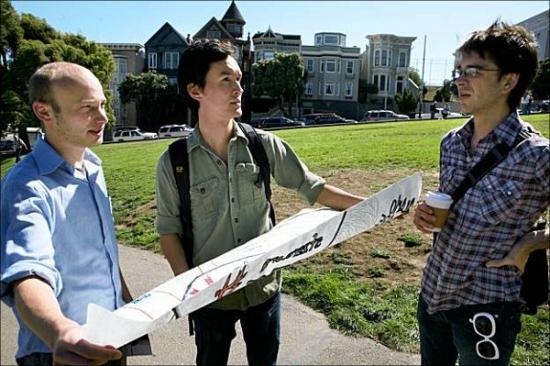
In San Francisco, the artists of SFZero cite Situationism and Fluxus as fundamental to their practice. The SFZero collective was founded by Ian Kizu-Blair, Sam Lavigne, and Sean Mahan in January 2006. Initially, the group used something like a Fluxus process of writing instructions for happening-like events that teams of other players acted out. Soon, these collaborations became the basis for both an online community and real world urban games network that now include over five thousand players. Through the SFZero website, participants initiate events by challenging other participants to ‘Eat a food that frightens you’, or ‘Go to a street corner of your choosing and wait for something fantastic to happen.’ SFZero seems to agree with classic Situationist objectives. A good game shifts awareness, Kizu-Blair says, changing the city for the people who play: ‘Oftentimes the players report that they have a completely different experience of the urban environment as a result of playing and go to places in their city where they have never been before. There is a cinematic quality whereby players live out experiences that normally exist only in spy movies – chases down dark alleys, chance meetings, etc.’ Typical SFZero tasks range from exploring overlooked locations in the city to taking a chance on meeting new people.
As fantastic as some of these instructions sound, and as important as the Internet is to SFZero’s success, Kizu-Blair says it is essential that some productions have a real world component: ‘As people become disenchanted with eight plus hours per day of screen time, they are increasingly gravitating towards hybrid activities that bridge the space between the virtual imaginary and the physical real world. These activities blend the safety and simple pleasure of screens with the risk, tension and excitement of physical interaction. More and more, members of our society will seek to escape from escapism towards an ethics of action, to escape from movies to real experiences. They will find that they have little idea how to have real experiences after their time in the imaginary. SFZero is the transition. ‘SFZero offers both real-world excitement and eternal return to the screen, to re-live, re-experience and re-imagine your engagement with reality.’
Recently, Kizu-Blair, Lavigne, and Mahan have begun staging riskier, more elaborate game events like ‘Journey To the End Of Night’, in which runners try to make it through six checkpoints on foot or by public transportation, while avoiding capture by chasers. An early version of Journey actually opened the 2006 season of Come Out and Play. This July, the veteran SFZero player Lincoln will stage a further production of Journey in Los Angeles.
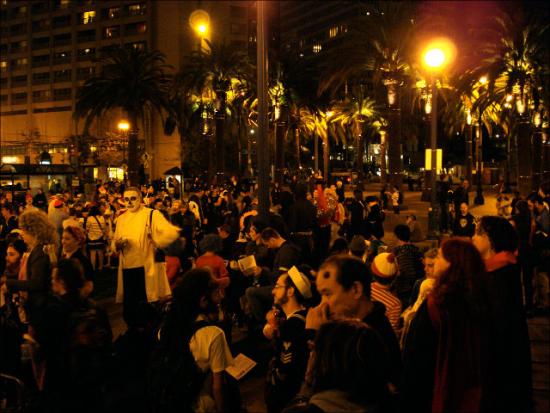
This summer, SFZero will present The Wanderers Union, a game that is loosely based on a French style of self-supported long-distance cycling called randonneuring. To perform Wanderers Union, players get a set amount of time to travel on foot and by public transportation through a series of zones. The idea is to create a single holistic experience of a urban area. The journey intends to juxtapose city spaces in ways that reveal meanings that might otherwise remain unobserved. Players who complete all of the events will progress from an initial four hour wandering to a final twenty-four hour wandering. By using play as a means of gaining understanding, participants will hopefully gain a small degree of mastery over urban space. Kizu-Blair says: ‘It’s like a video game – you level up and gain powers – but you have the added satisfaction of doing something real, and you can include anyone in the experience.’
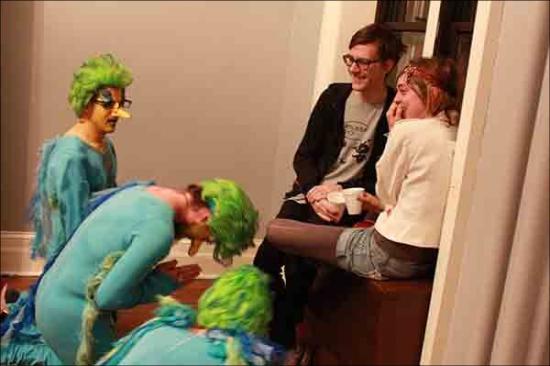
Back on the East coast, the New York based artist’s collective Opt-In found that what started as a thesis project for an experimental film class unexpectedly became a series of multimedia events that now includes filmmakers, fine artists, dancers, performers, and musicians. Titled ‘ZeroDay Exploits’, these evenings are the work of Bryn Jackson, Sarah Lerner, and Nathaniel Barker, who says the group has adapted the Fluxus concept of “happening” to the 21st century: ‘We create immersive environments in which strangers and friends can form new communities around a project, an idea, or a simple good time. We bring people from all walks of life together by promoting open dialogue and the creative expression of public discourse through a vast array of mediums and the use of public space.’
Past themes for the Opt-In exploits have included faith and technology. This July, the group plans to explore the idea of “home” by inviting guest artists and guests to contribute items and materials that evoke a sensation of home. The goal of this event is to create a sense of rootedness in New York, a city of perpetual resettlement. Another major goal for Opt-In is the deconstruction of the digital experience through live performance. According to Barker: ‘Our focus has always been on participation, so our events offer multiple means for encouraging visitors to get their hands dirty including music, secret actors to stimulate conversation, inclusive performances, and free art materials for spontaneous art creation.’
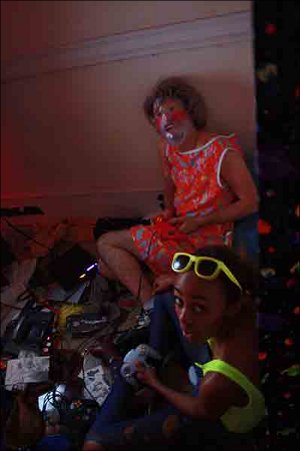
Also related to Fluxus, but in a gesture that seems more directed towards the Brazilian director Augusto Boal, a group calling themselves Invisible Playground Berlin, uses the urban game as a kind of political visualization. Founded by the artist known as Sebastian Quack Sebastian, this group’s interests lie at the intersection of theater and digital gaming. In ‘F Be I, See I A’, Invisible Playground re-enacted peer-to-peer communication as a giant game of urban capture the flag. Later, in Space Station Escape, the group simulated the release of an alien virus inside a phantom space station supposedly docked underground beneath Alexanderplatz.
Sebastian views missions and rule sets as ‘experience systems’, Games are a kind of participatory appropriation, an interrogative code that is placed over or enacted within an existing urban mechanism. In other words, if you want to get people to think more critically about the way immigration works in your city, you’d design a game that plays with the existing locations, activities, and mechanisms of immigration. In this way, Invisible Playground intends to put forward what otherwise goes unnoticed, tolerated, or is even passively accepted. Sebastian is careful to structure his rule sets in ways that highlight the power structures that arise between groups of players, between players and their environments, or between players and organizers. According to the Schwellenland site: ‘Players must work together and against each other. Over SMS and email you are guided to appointments and arrive at places where you were barred from entry until now. The game asks you to decipher who is legal, who is questionable, who can be trusted, who will trust you, who observes you, what should be ignored, what is critical. You are accompanied by a coach and by referees who left the usual national borders behind long ago and are now in Vienna as refugees without papers. These specialists can help you to master the challenges of being from a developing country. But they have also power to turn on you if you make too many errors.’

Finally, with a practice based in both New York and in Brazil, Adriana Varella is one of the artists behind the AnarkoArtLab, a collective of new-media, visual, dancers and genre benders in residence at the Living Theatre. Each month, Anarko creates a multimedia event that runs as part lab, part performance. This summer, the group plans to become mobile and to bring the Lab to different situations and neighborhoods. ‘We are searching,’ Varella says ‘for a last trace of that most ephemeral and elusive state where only a dusty dystopian haunting may yet remain. ‘Of course,’ Varella says, ‘all of them, Dada, the Situationists, Fluxus they are all our ancestors.’
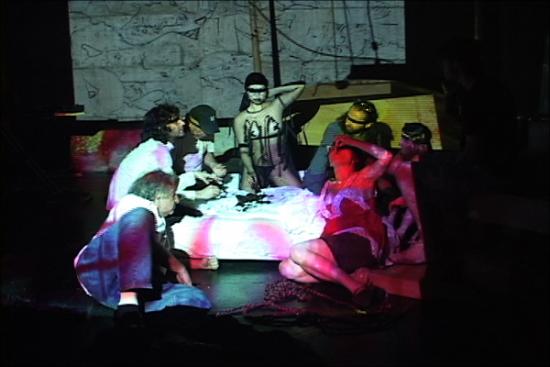
A collaborative review by Marcello Lussana and Gaia Novati
The article features artwork, projects and conference highlights from individuals and groups/organisations such as Honor Harger, Gebhard Sengmuller, Franz Buchinger, Ryoji Ikeda, Julian Oliver, Damian Stewart, Clara Boj, Diego Diaz, Ken Rinaldo, Michell Teran, Aaron Koblin, Daniel Massey, F.A.T, Warren Neidich, Kahaimzon Michel, Bruce Sterling, I-Wei Li, Steve Lambert Matteo Pasquinelli and more…

This year’s Transmediale.10 Festival explores the theme ‘future’ through connections between arts and technology. A part of the introduction read “Futurity is a concept that examines what the ‘future’ as a conditional and creative enterprise can be. At its heart lays the intricate need to counter political and economic turmoil with visionary futures. […] what roles internet evolution, global network practice, open source methodologies, sustainable design and mobile technology play in forming new cultural, ideological and political templates.”
2010 is a year that has often represented the future in Science Fiction literature, such as Arthur C. Clarke’s 2010: Odyssey Two, and now here we are. A good time to compare how we percieved the future, the past, and assess what is really happening, what we lost and what we have gained, and ‘perhaps’ find better ways to proceed. Art can offer different perspectives, ways of seeing and understanding, revealing our present states of being, sharing alternatives or even new meanings for our futures. This festival allows those visiting and taking part, an opportunity to explore, negotiate possible avenues in understanding together, what all this means.
Most of the Transmediale.10 events and art presentations were hosted at Haus der Kulturen der Welt, the same venue for past editions. The main exhibition Future Obscura, was curated by Honor Harger. A big dark room, a labrynth of exhibits divided up with high black curtains. Presenting different artworks enhanced by their own resonances of light. The concept was to use the actual light-sources from each of the artworks, as a kind of curatorial, installation metaphor. Immediately effecting the visitor’s experience through its overall ambiance, built around the theme or vision of future.
We make our journeys out there in the low light of the future, and return to the bourgeois day and its mass delusion of safety, to report on what we’ve seen. What are any of these ‘utopian dreams’ of ours but defective forms of time-travel? Thomas Pynchon, Against the Day (2006).
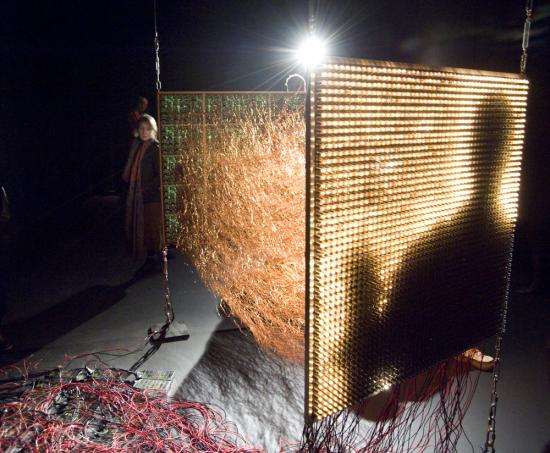
The work Parallel Image by Gebhard Sengmuller, in collaboration with Franz Buchinger, supported by Fels-Multiprint may of inspired the whole concept. An electronic camera obscura and media-archaeological, interactive sculpture. An apparatus for presenting different possible fictions, futures. “Unlike conventional electronic image transmission procedures, “A Parallel Image” is technologically completely transparent, conveying to the viewer a correspondence between real world and transmission that can be sensually experienced.” It presents the fiction that the technology of transmitting moving images was not discovered or invented at all – so no electronic pixels, just a camera and a monitor connected by 2,500 cables in order to track the movement of a body or an object.
Whilst weaving through the dark, curtain bound maze, discovering the separated presentations of Future Obscura, or what we can consider playfully here, as the ‘futurity tunnel’. We come across the video-audio installation data.tron, part of the datamatics project by Ryoji Ikeda. A huge screen (about 15 ft high & 40 foot wide) stands in front of visitors on a flat wall-surface. Various projected sets of data – consisiting of databases, computer consoles and white noise move and unfold before your very eyes. Music plays along with the images issuing forth deep hypnotic sensations. Each single pixel is strictly calculated by a mathematical principle and composed from a combination of pure mathematics. Ikeda reuses and deconstructs the data, building it up into a massive art-work, which also becomes an immersive experience. The same concept was used in his live performance at Transmediale.10 ‘Test Pattern’.
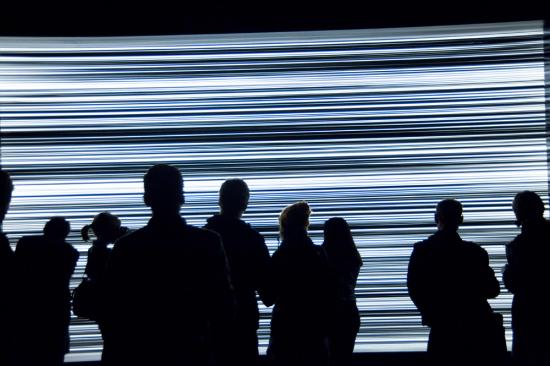
The Artvertiser, a work by Julian Oliver, Damian Stewart, Clara Boj and Diego Diaz, is a tool to swap advertisement with art in public spaces. With a self-made binocular device and dedicated software, you can experience a new metropolitan landscape, replacing the omnipresent adverts which plague our urban environments with art or images of your choice. The swapped, proposed images are often a play on the words of the original advertisement. Whichever image one substituted, the central message of the Artvertiser remains the same; our public city landscapes are bulging with publicity, we want to take that space back and personalize it – quite the same concept of graffiti, but dealing with the reproduction and re-representation of our public spaces. The software running on the device is an open source project and it will soon be available for all to download and use with Smartphones and Standard Camera phones. The Artvertiser points out a thoughtful and critical view point of our present, proposing an alternative future directly linked to our everyday lives. Ironically, this is a theme that is unfortunately scarce or missing in most of the selected Transmediale.10 works.
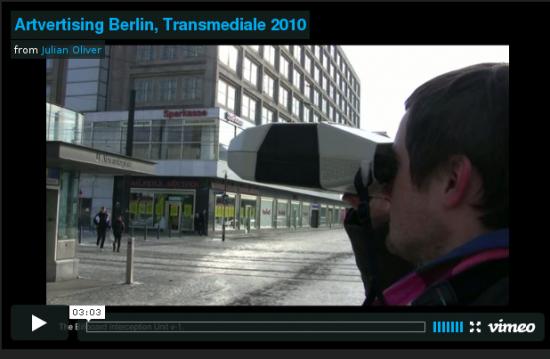
The work Paparazzi Botsby Ken Rinaldo, consisting of a series of autonomous robots. Each of them upright, the height of the average human. Packed with lens-based hardware, such as “cameras, sensors and robotic actuators on a custom-built rolling platform, they move at the speed of a walking human, avoiding walls and obstacles while using infrared sensors to move toward humans.” Capturing images of the visitors as though they were celebrities, flashes go off, then the images are projected up onto the surrounding walls. A popular installation reflecting on the abuse of reproduction and exhibition: some of the images were also uploaded and then distributed through social networking sites – a mass mediatic celebration of the visitors as well as the celebration of the bots.
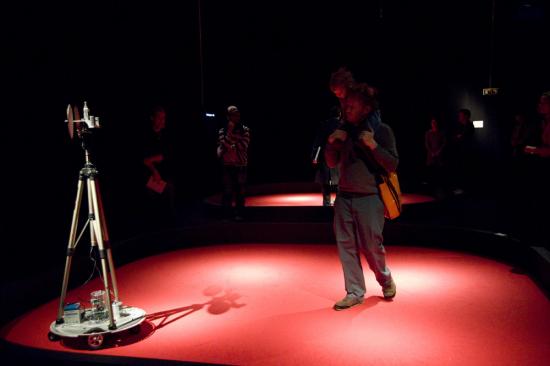
The selection of Transmediale.10 seems to award reproduction of content rather than consciousness of a different form of creativity. Also, the main prize is unexpectedly given to a woman, Michell Teran, with the project Buscando al Sr. Goodbar: a real tour through Murcia, a Spanish town, taking place at the same time on Google Earth and YouTube, an interaction between reality and social media. The work was presented at Transmediale.10 as a video remix of the original work. “The tour audience was introduced to everyday performances and actions happening in the city that often go unnoticed. Somebody solves a Rubik’s Cube in under 2 minutes, a young man plays a piano, a group of friends drunkenly sing together, a 14 year old boy headbangs in his bedroom, somebody is choked, a man teaches himself Arabic and two people fall in love. At certain points the audience left the bus and met some of the video authors who presented them with re-enactments of their performances.”
In the same way the second prize was awarded to the project Bicycle Built For Two Thousand by Aaron Koblin and Daniel Massey. A web-based, software able to record people repeating what they heard, then they used these voices to make a reconstructed version of the song Daisy Bell – the first song that implemented musical speech synthesis in the 1962.
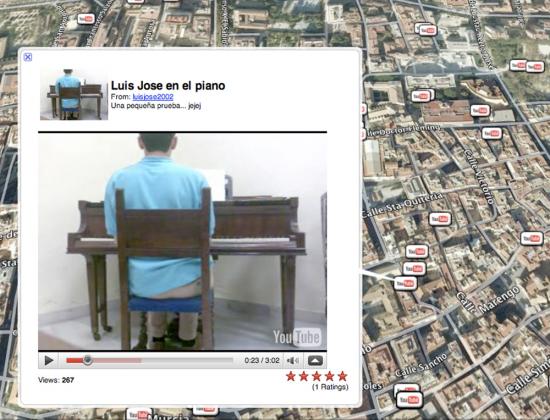
Speaking about the difference between re-production and creation, it is interesting to notice that the group F.A.T were present at the awards. Using intentionally, and excessively open source and pop culture as way of expressing their creative actvities, claiming and distributing activist propoganda-like projects, on networked territories and facilities (facebook/google ndr.) in order to stress out the holes of content present in the Web2.0 culture. For Transmediale.10, they presented a series of projects dedicated to the topic of the week: FUCK GOOGLE. In addition to free software, browser addons, live streams, communiques and on-site workshops, they also built a fake Google Street View car and toured it in the city of Berlin.
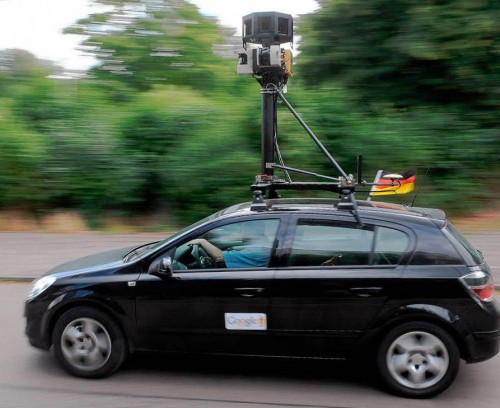
A more singular approach, which revealed different or other connections of a network is shown in Neuropower, by the biologist and artist Warren Neidich who won The Vilem Flusser Theory Award 2010: he researched new ways to manipulate the process of ongoing cerebral reconstruction. Exploring the potential of Neuroaesthetics, formulated in the mid-1990s “as a paradigm capable of describing the complex conditions of the ‘now’-a moment in which global technological networks and novel potentialities for subjectivity are coming into greater focus and correlation to each other. As knowledge becomes ever more commodified, and labor increasingly immaterial, our notions of art, work, and politics…”
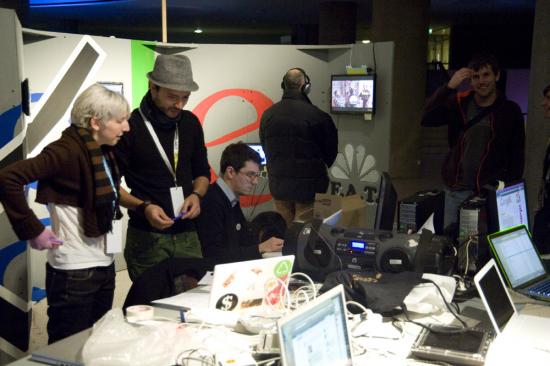
The gap between what could be the future or what we are imagining through the mass-media industry and the challenge that artists and creative thinkers are asked to face, is not really elaborated. A good example is the conference Phuturama: a space dedicated to the possible alternatives of an ‘imaginary’ for the future. One of the guests was Kahaimzon Michel: his description of the new version of Far Cray was mostly focused on the technical improvement of the game and no word at all was spent on the idea, the concept itself: the umpteenth war-games, colonialist and male-centered. The celebration of technology itself was the splitting point of this Festival, as it was somehow already announced at the opening day by Dr. Franke. His main contribution seemded to be about the importance of ‘Avatar’ the movie, for its big technological improvements.
Going back to the events, one of the most awaited speeches was Bruce Sterling’s keynote speech “Atemporality – A cultural speed control” about time and its relation to ‘future’. The main introduction text for Atemporality – A cultural speed control read “The speed of our society is constantly increasing in terms of processes, logistics and media, causing the present to ‘shrink’. We are experiencing the dissolution of meaningful frameworks in a similar way as Henry DeTamble: in politics, the intervals of planning and acting are reduced to the duration of a legislative period and in post-industrial economics volatile unpredictability has come to replace regular traits of growth and stability. Progress as the paradigm of modernity has been replaced by the continuous modulation of events. If progress is to go beyond the banal indulgences that give rise to a never-ending array of car shell designs then we need to analyse our present time with regard to its aesthetics and its media. The structure of the future has changed, and with it our sense of time. Are we running out of a future as a resource for growth, progress and stability? Has our cultural cruise control become defective?”
Reflecting on the proposed theme, Sterling presented Atemporality as he viewed it, an approach in understanding and recontextualizing history, “an effort in humanities” to embrace reality, the now.
“Step one – write problem in a search engine, see if somebody else has solved it already.
Step two – write problem in my blog; study the commentory cross-linked to other guys.
Step three – write my problem in Twitter in a hundred and forty characters. See if I can get it that small. See if it gets retweeted.
Step four – open source the problem; supply some instructables to get me as far as I’ve been able to get, see if the community takes it any further.
Step five – start a Ning social network about my problem, name the network after my problem, see if anybody accumulates around my problem.
Step six – make a video of my problem. Youtube my video, see if it spreads virally, see if any media convergence accumulates around my problem.
Step seven – create a design fiction that pretends that my problem has already been solved. Create some gadget or application or product that has some relevance to my problem and see if anybody builds it.
Step eight – exacerbate or intensify my problem with a work of interventionist tactical media. And step nine – find some kind of pretty illustrations from the Flickr ‘Looking into the Past’ photo pool.” Sterling.
The philosophy of history studies, an objective point of view, a map that does not always reflect the real. Atemporality instead, has to be a “calm pragmatic skepticism about the historical narrative” like telling stories of people who were not the winners, report history that has no literacy or playing fiction into reality, being a “personal public testimony of a future that doesn’t exist”.
“Atemporality is a philosophy of history with a built-in expiration date. It has a built in expiration date. It’s not going to last forever. It’s not a perfect explanation, it’s a contingent explanation for contingent times.
Futurity was expected, futurity is here now, there goes futurity into the past, so long futurity, thank you for an exciting, fulfilling and worthwhile time.” Sterling.
The Atemporal approach asks us to cool things down, challenge the need and desire for a constant, linear future. Proposing not to rush ever onwards, remembering what we have now, reclaiming and rediscovering the qualities we possess rather than feverishly running forward all of the time. You can read Bruce Sterling’s whole speech here – Atemporality for the Creative Artist
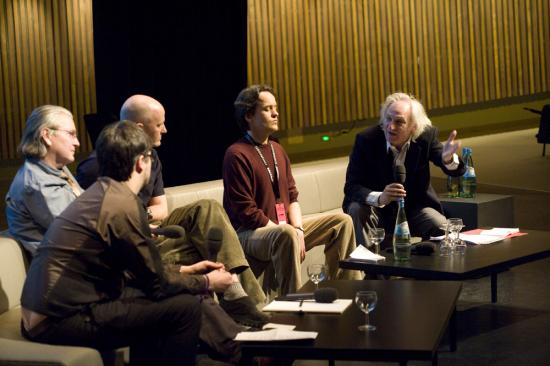
A subject which played a central role for much of the discussions held, was related to the economy and how it addresses the creative work (a third of the speeches were about this topic). The financial crisis had also influenced much of the artistic agenda. Unfortunately all this talking about commerce was often presented without critical reasoning, and so we had a lot of showing off and gesturing about how amazing certain new technologies were. Which gave off a more bland sense of enthusiastism, a technologically determined, already accepted future, without the necessary awareness of the overall social contexts of what it all really means. Yet there were some projects that tried to propose a different view on this theme. The performance Values, by I-Wei Li, pretended to calculate, with the help of a computer, the value (artistic-value) of the participant, based around questions on art and art practice. The Laboratoire Deberlinisation uses an uncommon way to discuss about immigration and value in our globalized world, with the provocative use of an African value, the Afro, an international insurance card and passport.
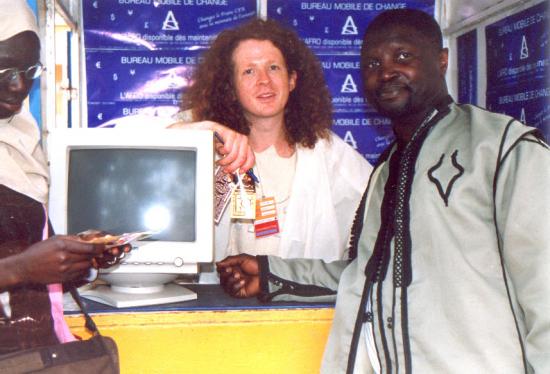
A deep critical, discussion of the current socio-economical situation produced by the international financial crisis, was held in the main auditorium, Liquid democracies. Steve Lambert presented his works and talked about direct politics, re-using our culture and how to subvert it. In his opinion, utopia has to be used as a direction and not as a destination, living moments of freedom: an alternative approach for direct, political change, using small actions and persistence, participating tactically through our cultures. Matteo Pasquinelli later focuses attention on the whole of net society and the digital matrix. He wondered who has the strongest power, who detains the monopolies and which place is dedicated to the workers and specifically to the cognitive (creative) workers? Pasquinelli used the concept of a “new feudalism” to define contemporary societies. The multitude is not fluid but embroils in a participatory process that traps it in-between the oligarchy of the big companies. Democracy in this sense has ended and gives the go-ahead to a post feudalistic society. The end of this construction is an open question: is there any subject able to break the power of these big monopolies?
Parallel to Transmediale festival is Club Transmediale Festival CTM a music and visual arts event held every year in Berlin. The festival started as the musical side of Transmediale and then added more and more interests involving the arts. Through the years it has become more popular and expanded, not just with music during the night, but also with their own exhibitions, talks and lectures during the day. This year the event was even longer than Transmediale itself, starting from January 28th and ending February 7th 2010, with the subject “OVERLAP – Sound & Other Media” giving a lot of attention to the relationship between music and videogames.
A missing element worthy of attention at Transmediale.10 this year, was its audience. Even though the amount of visitors were three times more than last year. The time for questions and discussion with the public was often too short, or ineffective. A contemporary approach in acknowledging the audience would be to understand there is not a clean divide anymore. And even though the old protocols still count in some cases, its representation at the festival was not necessarily a true reflection of the nature of networked, contemporary art and its culture. A hidden and dynamic audience which could have offered their own ‘valid’ interpretations around the subject was lost. Yet, on the whole the festival was extremely interesting in many ways, and had some excellent works and discussions well worth experiencing.
Featured image: Photograph of a creative experiment on more intelligent modes of inhabiting the planet
Open_Sailing‘s biggest achievement is perhaps to have turned our future into an open source project. Led by a group of enthusiasts, gathered around the idea of “we don’t know what will happen, but together we can invent our future and cope”, the project puts forward a very ambitious, action-driven, experiment-led, way of thinking forward. After meeting with the founder of the project, Cesar Harada, Open_Sailing proved to be a much more complex enterprise than I originally thought.
Initially the project started by mapping threats, the idea being that threats can produce something else than fear. Indeed Cesar Harada, was decided to turn threats into design constraints. This constitutes an interesting methodology to deal with the current climate of fear. The exploitation of threat has become the standard procedure to stabilize a permanent state of emergency. Mobilising virtual threats, states acquire exceptional powers that facilitate the implementation of ever more pervasive measures of control. The current case of swine flu is the last of a long list of exercises of mass modulation of fear. War on terror is the paradigmatic one. On the other hand, and following the warnings of the Maya calendar, all sorts of popular tales for an apocalyptic 2012 have started to populate the planet.
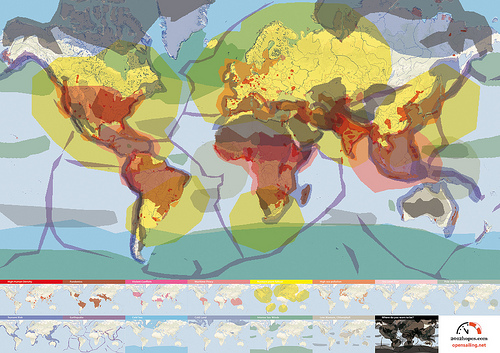
The role of Open_Sailing is to function as a catalyst that channels all this energy into the production of a better future. In short, its role is to transform fear into hope. Certainly this functioned as a strong attractor for new collaborators and soon the team started to grow. After putting together large amounts of real-time data about all sorts of dangers such as tsunami, terrorist attacks, nuclear accidents or pandemics, it became clear that the potential safest spots on earth were mostly located at sea. That led to the idea of designing the infrastructure necessary to inhabit those spots based on the concept of ‘Open Architecture’. Fear had been successfully turned into an active force unleashing the creative process. Inspired by this initial concept the Open_Sailing team started a very intense process of scientific, technological, architectural and artistic research that resulted in a first prototype awarded at Ars Electronica: Open_Sailing_01.
“A drifting village of solid and comfortable shelters surrounded by flexible ocean farming units: fluid, pre-broken, reconfigurable, sustainable, pluggable, organic and instinctive.” [1]
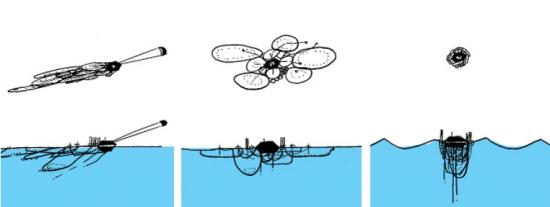
This drifting village, which is about 50 metres in diameter and can host four people, is designed to respond to its environment, being able to become compact and endure severe weather conditions, and spreading out to harvest in calm situations. Open_Sailing_01 was supposed to set sail last May 2009 but mis-coordination in the production with Ars Electronica delayed the plan. In the meantime, small intermediary prototypes of different modules are being built and tested constantly, but the Open_Sailing team hopes to put together the main modules of the International_Ocean_Station for general testing by the summer 2010.
One other important thing that came across in the interview with Cesar Harada was how soon after Open_Sailing was set in motion, it became clear that the project was not only about escaping the problematics of our society. It was definitely not an idealistic utopia happening elsewhere and starting a world from scratch. Rather than an exercise of escapism, they realised that the idea of inhabiting those sites where there is no threat had become an experimental laboratory where to grasp the future. Indeed Open_Sailing is very much about finding ways to face and deal with the very problems of our world.
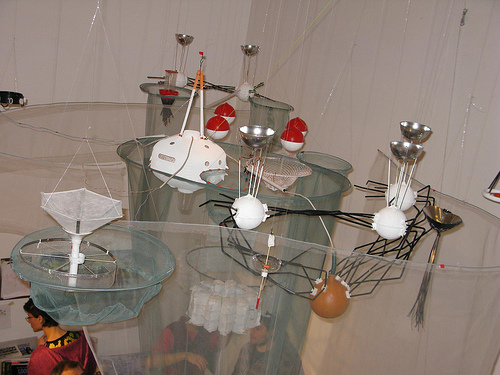
“Be it overpopulation, global warming or energy conflicts, we are living in a time where ‘Apocalypse’ beckons. We need to collectively invent and spread bootstrapping DIY technologies for the forthcoming challenges, not only to survive but to re-invent how we inhabit this planet.” [2]
This became particularly obvious when the team flew to Morocco to try out some live-saving structures. Between the coast of Morocco and the Canary Islands in Spain hundreds of illegal immigrants die every year at sea. A high-seas permanent shelter would provide a low cost life-saving facility for the migrants.
This particular instance is also paradigmatic of the way in which experimentation is carried within the project. Future thinking is developed through material instantiations. This very characteristic process of design and engineering disciplines gives Open_Sailing an exciting palpability, a materiality, a commitment with actualisation that accounts for its potential to bring about real change. Commitment with results drives the project away from the artistic disciplines, but the poetics of the project undeniably brings them back together. A project that in a year of development has acquired such a level of complexity necessarily had to go through a very intense and accelerated process of conceptualisation and experimentation. And there comes the figure of the enthusiast, an experimental survivalist who is willing to take a plane the morning after an idea has come up to participate in a military training testing life-saving technologies.
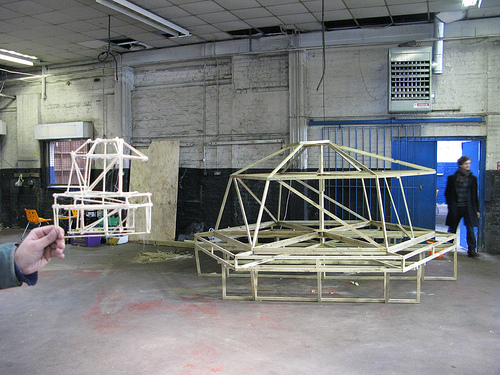
Even more interesting is perhaps how this enthusiasm becomes contagious and the project starts to work as a truly open source venture. Open_Sailing becomes a powerful autonomous entity that keeps bringing people in a dividing itself into labs. Each new lab engages a whole new group of contributors, with a new set of preoccupations and hopes. The project proves to be definitely not about the implementation of a master plan or utopian blue print, but an example of how open source can literally be applied to the construction of alternative worlds. Within these labs we find different experimental research projects focusing for example on mesh networking; pollution, climate and natural reserve monitoring; sustainable aquaculture in high seas; or energy autonomous systems that generate electricity through wind, sun or wave power.
Now, there is of course the problem of co-option. The research being done is a very useful material with infinite commercial and even military applications. But perhaps this is not something that compromises the success of the project. Rather, its value lies in its capacity to encourage people to co-design their own futures. It is more about joining people that want to create than attracting those that want to buy. Surely, it is the process of creation of alternative that’s been set in motion that is truly significant, even more than the technologies being produced. Furthermore, Open_Sailing manages to reverse the process of co-option, the same way it reverses the effects of threat. Collaborators turn to scientific institutions, corporations, military research, as a useful resource, and then open up the knowledge acquired. This is not a new ‘green design’ product for the consumerist society, it is a spark for a collaborative rethinking of the world.